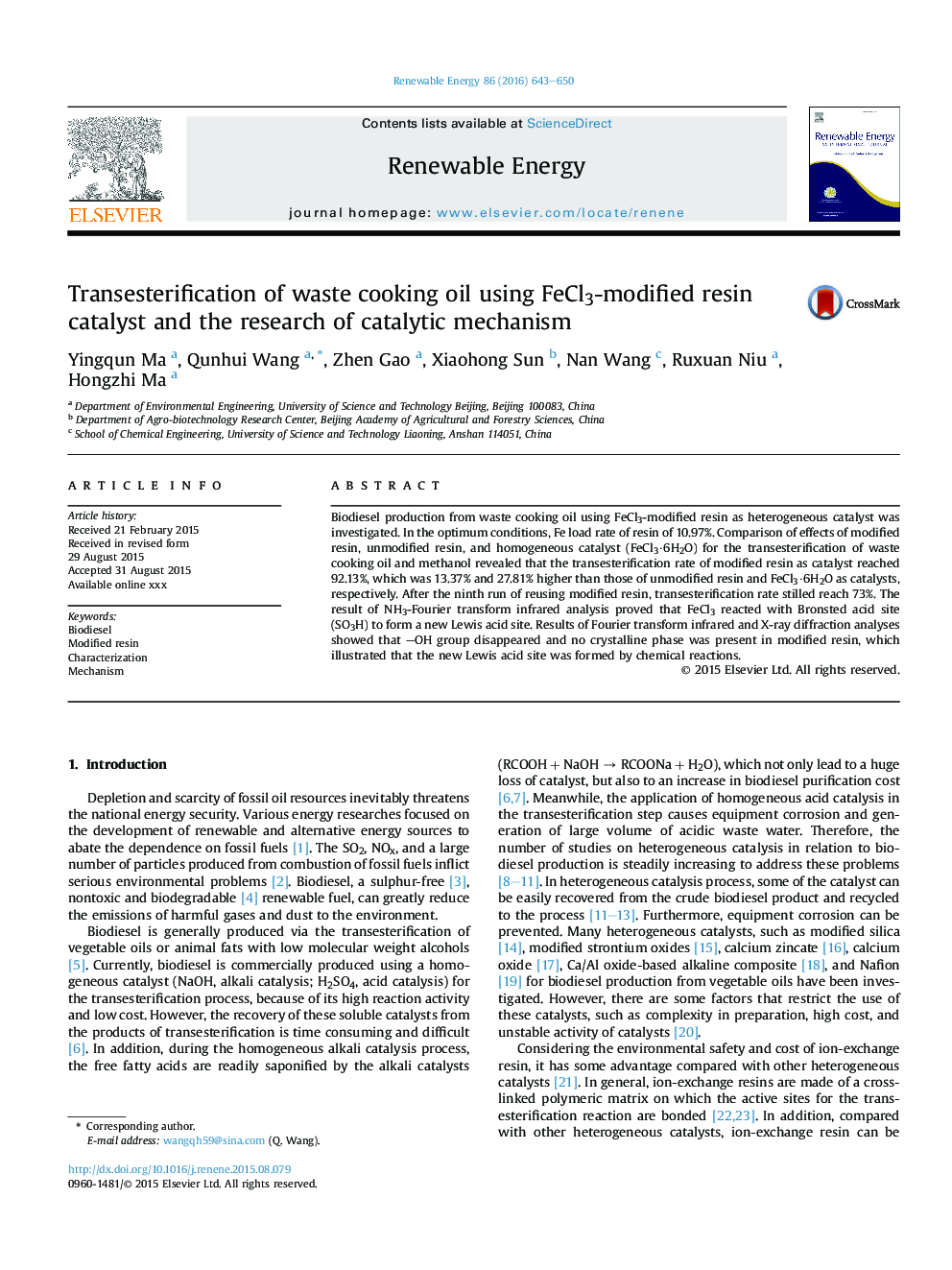| Article ID | Journal | Published Year | Pages | File Type |
|---|---|---|---|---|
| 6766638 | Renewable Energy | 2016 | 8 Pages |
Abstract
Biodiesel production from waste cooking oil using FeCl3-modified resin as heterogeneous catalyst was investigated. In the optimum conditions, Fe load rate of resin of 10.97%. Comparison of effects of modified resin, unmodified resin, and homogeneous catalyst (FeCl3·6H2O) for the transesterification of waste cooking oil and methanol revealed that the transesterification rate of modified resin as catalyst reached 92.13%, which was 13.37% and 27.81% higher than those of unmodified resin and FeCl3·6H2O as catalysts, respectively. After the ninth run of reusing modified resin, transesterification rate stilled reach 73%. The result of NH3-Fourier transform infrared analysis proved that FeCl3 reacted with Bronsted acid site (SO3H) to form a new Lewis acid site. Results of Fourier transform infrared and X-ray diffraction analyses showed that -OH group disappeared and no crystalline phase was present in modified resin, which illustrated that the new Lewis acid site was formed by chemical reactions.
Keywords
Related Topics
Physical Sciences and Engineering
Energy
Renewable Energy, Sustainability and the Environment
Authors
Yingqun Ma, Qunhui Wang, Zhen Gao, Xiaohong Sun, Nan Wang, Ruxuan Niu, Hongzhi Ma,
